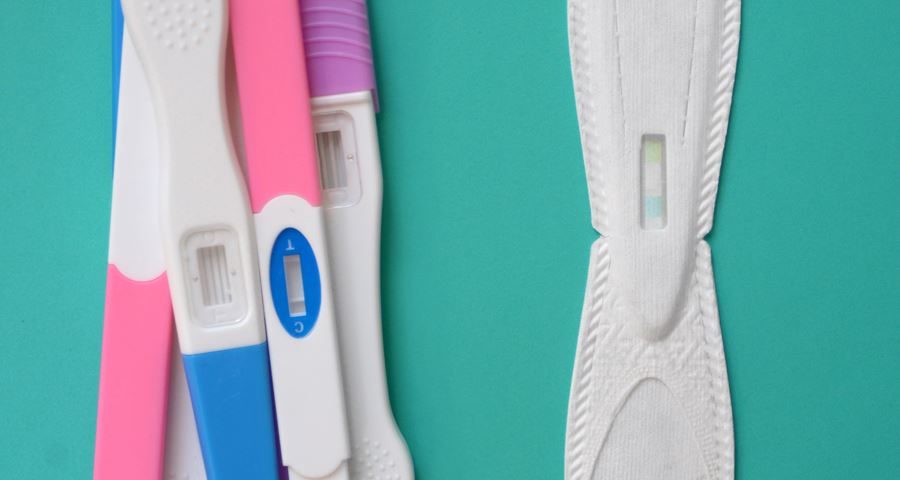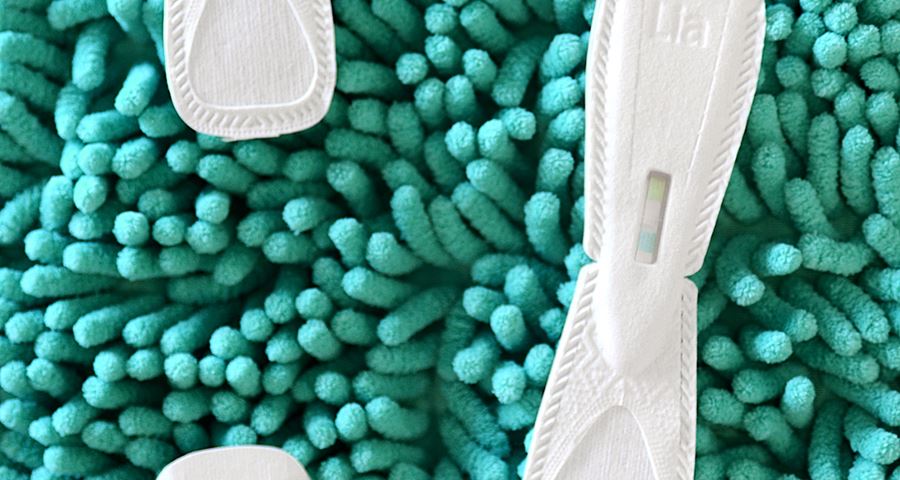Lia Pregnancy Kit Product: Beazley Designs of the Year
Q&A - Michelle Millar Fisher (nominator)
The Design Museum speaks to curator and design historian, Michelle Millar Fisher, about the Lia Pregnancy Kit, which she nominated in this year's Beazley Designs of the Year exhibition.
Michelle has long been interested in the confluence of gender and design, the subject of an independent co-organised exhibition and co-published book, I Will What I Want: Women, Design, and Empowerment (spring 2018), in conjunction with muca-Roma, Mexico City. In late 2020, she will be releasing her book, Designing Motherhood: A Century of Making (and Unmaking) Babies, with co-author, Amber Winick. Find it on Instagram at @designingmotherhood
#BeazleyDesignsoftheYear

Q: Can you tell us a little bit about yourself? How did you make the move from teaching to curating?
A: I’m originally from Scotland but I’ve lived in the United States for the last 15 years. I moved to New York right after undergrad at Glasgow University and worked in museums (by sheer dumb luck—someone else dropped out last minute from a work placement at the Guggenheim and I scrambled as the backup), and then moved to Philadelphia about two years ago to do the same.
Most recently, I moved to Boston to work at the Museum of Fine Arts where I’m the curator looking after design, craft, and decorative arts. I haven’t moved on from teaching, though—I still love being in the classroom and take the opportunity to teach whenever I can.
Q: Do you think there is more to be done in the museum sector to ensure that there is equal representation of work on display from non-western and female groups? From designers to curators, do you think we have a political responsibility to make sure this happens?
A: Yes and yes. It is absolutely our political responsibility and our moral one too. I participate in projects that ask for greater salary transparency, as well as things like paid family leave for parents and carers (the burden of which falls disproportionately on women). In the US, which is structured a bit differently than the UK in terms of how museums are run, making this happen starts with a more diverse board so that decision making is committed to equal and equitable access, inclusion, and opportunity right from the head of an institution.
Q: Why did you choose to nominate the Lia Pregnancy Kit for this year’s Beazley Designs of the Year exhibition?
A: For many reasons. Lia was designed in Philadelphia, so I was happy to nominate something from the city in which I work. I know from talking to the company's co-founders, Bethany and Anna, that it’s an incredibly complex project that embodies years of research across different disciplines, yet it is simple and super elegant in its design. I have also for some years now been actively researching and publishing on design for people with uteruses and ovaries, and this product is a natural fit. It’s also a very young, entrepreneurial company run by two women. They've built it from the ground up with incredible hard work and determination (VC funding doesn't fall in your lap if you're innovating in the field of women's reproductive health). What’s not to love?
Q: The pregnancy test hasn’t really changed over the past 30 years. Why do you think it is now experiencing a design revival? What sets the Lia Pregnancy Kit apart from other designs?
A: I think that Bethany and Anna pinpointed the confluence of several problems, including single use plastic, lack of design innovation over the recent past, and women wanting to design for themselves. There has been a recent wave of companies who are working in the same vein, including tackling menstrual products (from tampon services to redesigning systems to prevent period poverty) and even speculative designs for agency over one's body, gender, and identity, for example the brilliant Mary Maggic. People can see that they can design for themselves, they don’t have to wait for somebody else to do it. And when they do it, it’s brilliant!

Q: What’s the one thing you’d like people to remember about Lia Pregnancy Kit when they leave the Beazley Designs of the Year exhibition?
A: That no design is a complete panacea. Whatever we are using in terms of materials, whether biodegradable or not, consumption is something that we have to be smarter about across-the-board. And whatever agency we give to an individual or a community, the work isn't done until barriers to similar freedoms are removed for everyone.
Q: From sonograms to the teething toy, Sophie the Giraffe, many designs have defined the relationship between mothers and children over the course of history. If Beazley Designs of the Year was renamed “Designs of the Century”, which three objects would you nominate and why?
A: This is such a great question! So, that quote in the question is taken from a book an exhibition project that I’m working on with my brilliant research partner, Amber Winick. It’s called Designing Motherhood, it looks at the ways in which design helps us negotiate reproduction, pregnancy, birth, and postpartum, and it will come to fruition in late 2020. So many of my favourite designs from the last century tie into that subject: Jean-Paul Goude's and Antonio Lopez's 1979 PoMo maternity outfit for Grace Jones (so perfect, so good!); Meg Crane's original at-home pregnancy test kit from the 1970s (it was packaged so sleekly, rebuffing the attempts of the men on her team to add bows and pastel colours to it); and one of the seminal self-care books of our time, now in 31 languages across the globe but it started off as a photocopied booklet: Our Bodies, Ourselves by the Boston Women's Health Collective, from 1970. It's a bible.
Q: What do you think makes good design?
A: Good design is aware of sustainability at all levels. I don’t just mean the very superficial lip-service often paid to as brief, green-washing note to the environment, but really thinking about sustainability at every single level of existence, from humans to plants to animals to labor to love and beyond. I think a lot about that in terms of what I do in museums--how do we sustain communities, how do we sustain relationships, how are we sustainable in terms of the materials we use? How can we be better at that?
Q: You’ve mentioned before that one of your favourite design classics is the home pregnancy kit by Margaret Crane. What is it about the object that you like so much?
I love Meg’s design because it gives people agency, and allows them to chart their own destinies. For those people who don’t know the story, she was told that her idea was ridiculous that women might be able to do a simple diagnostic test at home rather than wait for several weeks for test results after a visit to the doctor, but she persisted. It has had such health impacts and social impact since.
Q: Are there any other female designers that inspire you and why?
There are so many other female designers that inspire me! Here's just my Philly list: former Clay Studio resident Ahrong Kim; Lindsey Scannapieco who has made an oasis of artist studios, food, and friendship at the old Bok School Building in South Philly which is predominately occupied with residents from the immediate area; Justine Kelley's beautiful illustration; and my very young but very talented Emma Perloff gorgeous embroidery designs.
Q: 22% of professional designers in the UK are female, and only 11% are creative directors, despite the majority of design students being women. What impact do you think this has on the products available to those who identify as female?
A: It obviously has a huge effect. We all operate from our own social locations, including designers. As in any profession (museums included!), we all need to do our part to ensure that barriers to becoming a designer along the pipeline, from early education to professional development, advancement, and leadership opportunities continues to move towards greater equality if we want to see design innovation in products and systems that really speak to and benefit women.

Related exhibition